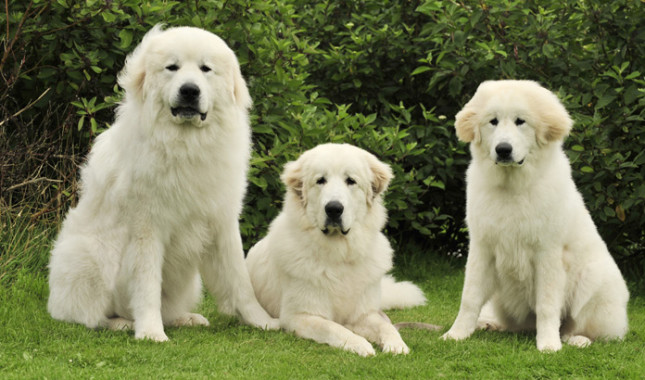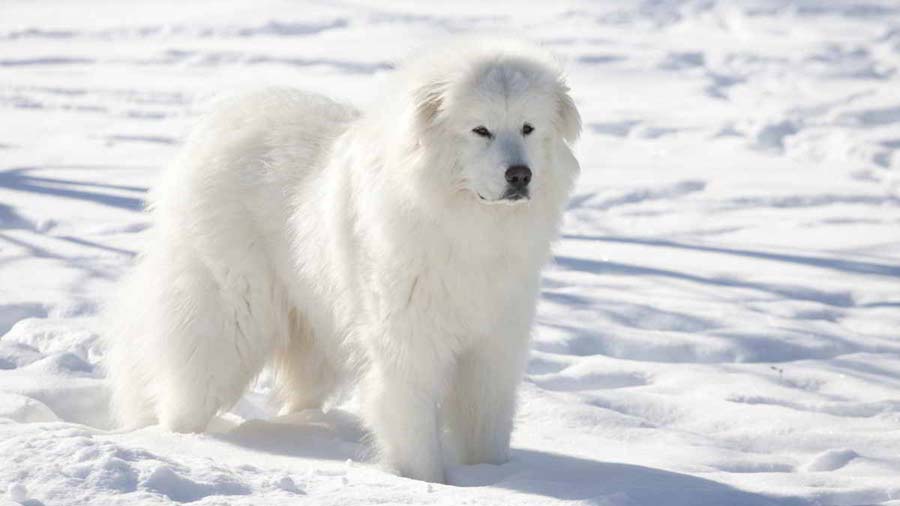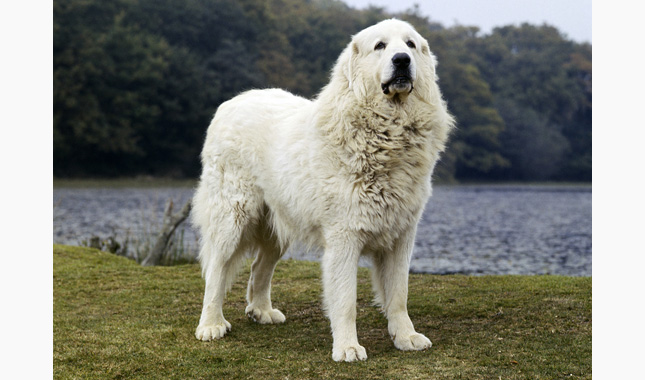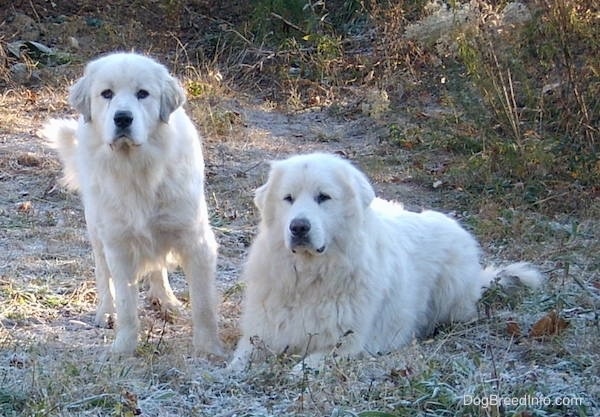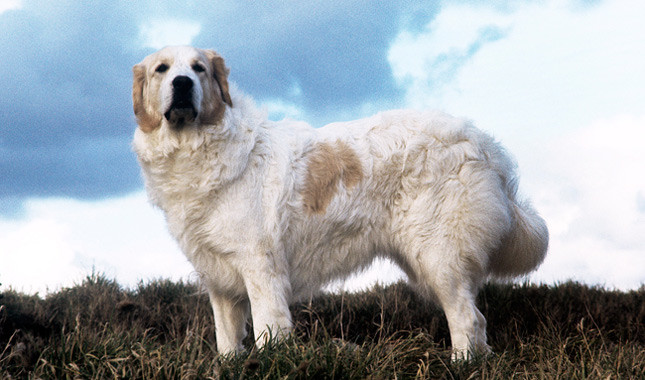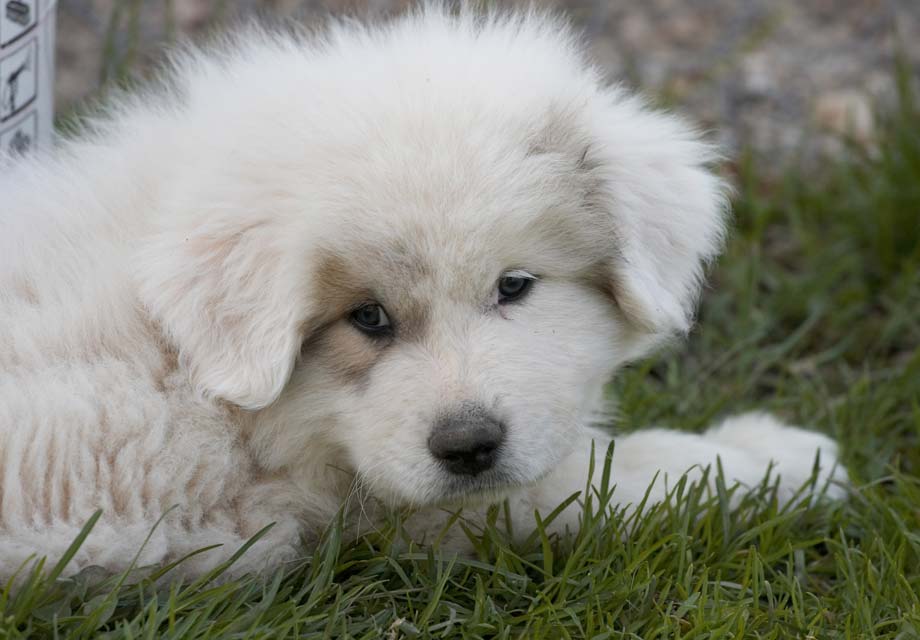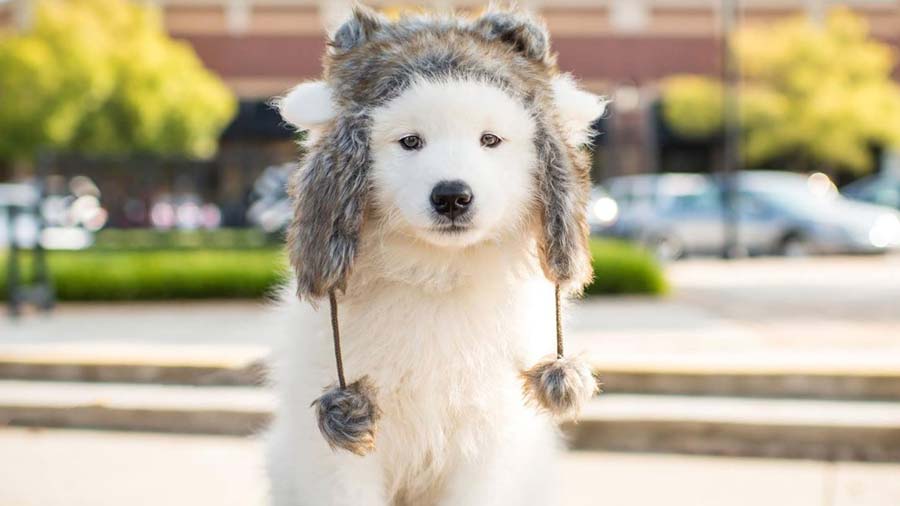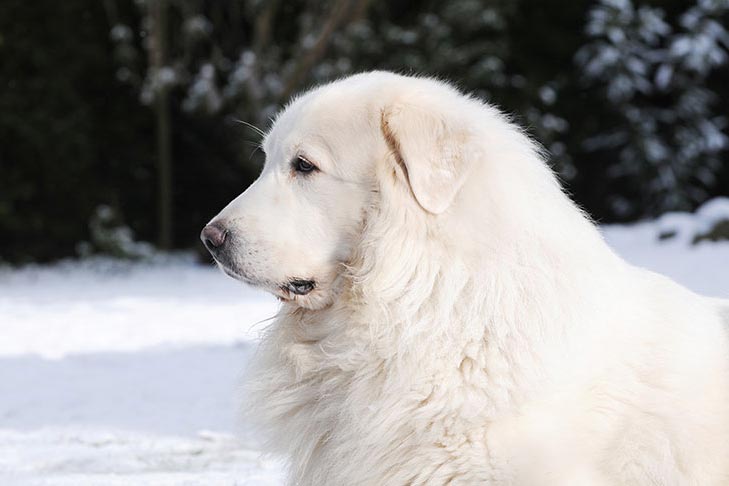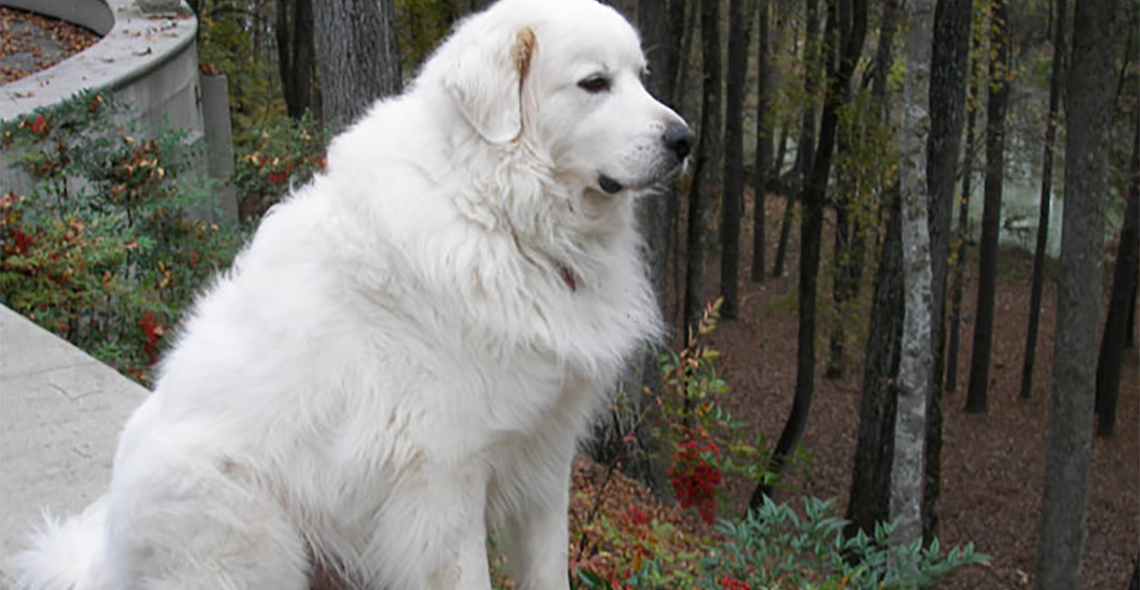Great Pyrenees

Overview
The regal and elegant Great Pyrenees, also known as the Pyrenean Mountain Dog across northern Europe, has often been compared to polar bears due to their beautiful white coats as well as their large, imposing presence. If you're looking for a guard dog for the family or an active furry companion, this may be the dog for you.
Physical Characteristics
Not to be confused with Pyrenean Shepards or Mastiffs, the Great Pyrenees is a part of the Working Group. It's a larger breed, with males that can grow to a maximum of a whopping 130 pounds (59 kg). Despite their size, they have just as great of stamina as their namesake. They have V-shaped ears, weather-resistant double-coats of thick fur, and come in one color: white. While white is the primary coat of all Great Pyrenees, some will additionally have patches of gray, rust, or tan along their face and/or ears, perhaps even along the body and tail.
Their fur is most abundant around the neck and shoulders, a plume along the tail, and feathering that runs across the back of the front legs and thighs. Being doubled over, the undercoat is dense, fine, and wooly whilst the coarse, straight upper coat is long, flat, and thick. They are not droolers by nature, but they do have a tendency to drool a bit, especially with exercise, heat, or stress. One strong indicator of the Great Pyrenees is the double dewclaws on their hind legs. Their double dewclaws are used for climbing, and these white canines are one of the very few breeds to have them.
Shedding & Grooming
The Pyrenean Mountain Dog is considered to shed on a moderate to a high level depending upon their environment. Much like other large breeds, they require regular nail clipping, teeth cleaning, and ear cleaning to prevent infection or other damage. Their double dewclaws should be trimmed as well, but not removed. Being as they are big and fluffy, they will shed plenty of that pure white fur on a constant basis and have at least one major shed annually, either in the fall or spring.
Don't let that scare you off, though! The Great Pyrenees is fairly easy to groom, generally only needing to be brushed once a week, maybe twice during shedding season. Also, since their coats are weather-resistant, a lot of dirt and grime they accumulate in a day can simply be brushed out of their fur. When grooming, please be certain not to shave them!
Their double-coat helps them regulate temperature and protects their pink skin from the harsh rays of the summer sun just as much as it keeps them warm in the ruthless cold of winter. If there's an exceptional reason your double-coated dog requires shaving, just be sure to put sunscreen on and limit their outside time to 10-15 minutes in 80+ or 60- degree Fahrenheit (26+ or 15- Celsius) weather.
Health & Lifespan
On average, this breed will live 10 to 11 years, though you may be able to get another year or so out of an especially healthy Pyrenees. Like many large dogs, however, they are susceptible to cancer in old age, bone cancer in particular.
Temperament
The Great Pyrenees belongs to the Working Group, one of seven officially recognized American Kennel Club breed categorizations. This category includes 50 large dogs which vary in what type of work they were bred for, but all of them are described similarly as robust and headstrong. On account of this as well as their size and independence, the Pyrenean Mountain Dog may not be a good fit for the first time owner.
Originally bred to guard livestock, these gentle giants are naturally protective, confident, and territorial, but additionally very patient, docile, and loyal. Raised with proper socialization, they are friendly and affectionate with a laid back, sweet nature. These smart pooches have a soft spot for small and helpless creatures, having a natural instinct to protect them against predators, intruders, and other perceived threats. This makes them fantastic guard dogs for the family, as they have the perfect disposition for a lifestyle that includes children.
Not built for life in small spaces nor apartment living, the Great Pyrenees requires a fenced-in yard and regular, daily exercise. Because they are a pretty laid back breed, they won't need much more than a daily walk for around 20 - 30 minutes. Alternatively, if you have children, an hour or two of playtime with the kiddos might be enough to tucker the big lug out. Be careful, though, as these farm dogs are wanderers that may roam off if in an unenclosed space off leash.
On that note, their work protecting livestock has made this breed nocturnal by nature and prone to bark, bark, barking. They have a keen sense of smell and excellent eyesight, so they have quite a lot to bark at - particularly at night - unless trained otherwise.
Training
These obstinate fluffballs are difficult to train unless you start early. They require consistency and patience, as they are slow to learn commands. Intelligent and stubborn, I suggest positive reinforcement techniques to get commands to stick. When training for recall, note that Pyrenean Mountain Dogs likely can't be expected to immediately come when summoned.
History
It is believed that they descended from white mountain dogs in China up to 11,000 years ago. Around 3000 BC, farmers in Newfoundland officially developed the breed as guard dogs, using their smaller Pyrenean Shepards for herding cattle. Their purpose was to protect livestock, people, and the farm, and they were named after the Pyrenees Mountain range, where they were often recruited as working dogs. For a good, long while this breed was considered a peasant's breed until it was brought to light by the Grand Dauphin, of whom favored them, and even declared them the royal dog of France in 1675.
Breed Information
| Popularity: | 2018: #66 2017: #66 2016: #67 2015: #67 |
| Origin: | France Spain |
| Breed Group: | Working (AKC:1933) Guardian Dogs (UKC) |
| Size: | Giant |
| Type: | Purebred |
| Life span: | 10-12 years |
| Temperament: | Affectionate Confident Fearless Gentle Patient Strong Willed |
| Height: | Male: 27-32 inches (69-81 cm) Female: 25-29 inches (63-74 cm) |
| Weight: | Male: from 100 pounds (45 kg) Female: from 85 pounds (38 kg) |
| Colors: | White |
| Litter Size: | 6-9 puppies |
| Puppy Price: | Average $700 - $900 USD |
Breed Characteristics
| Adaptability: |
|
| Apartment Friendly: |
|
| Cat Friendly: |
|
| Child Friendly: |
|
| Grooming: |
|
| Health Issues: |
|
| Intelligence: |
|
| Trainability: |
|
| Watchdog Ability: |
|
Dog names
| Rank | Male | Female |
|---|---|---|
| 1 | Teddy | Zoey |
| 2 | Bailey | Coco |
| 3 | Dexter | Zoe |
| 4 | Harley | Nala |
| 5 | Gus | Lulu |
| 6 | Bandit | Riley |
| 7 | Moose | Millie |
| 8 | Romeo | Dakota |
| 9 | Ace | Sugar |
| 10 | Joey | Athena |
| 11 | Luke | Hazel |
| 12 | Chance | Peanut |
| 13 | Rufus | Sydney |
| 14 | Benny | Allie |
| 15 | Bruce | Heidi |


